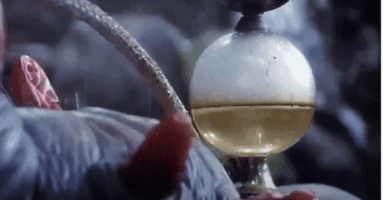Disney Spent Over $100 Million On Streaming Show They Abandoned

In case you’re wondering what happened to Disney’s Willow, Forbes expertly breaks down the financials in a way that won’t make you any less angry, but at the very least will help you understand the economics of the streaming industry. The short-lived fantasy drama, which served as a continuation of the 1988 film of the same name, ultimately cost $105 million to produce, before being cancelled after an eight-episode run. But to make matters worse, Willow was removed from Disney+ entirely this past May, so Disney could write off the series as an impairment charge.
Filming Willow in the UK allowed Lucasfilm to recoup just over $20 million, bringing the net spending for the ill-fated series down to $80 million.
Though most streaming shows don’t have itemized ledgers stateside, the financials need to be reported if a series was produced in the UK. Television Tax Relief laws on the other side of the pond allow studios to claim a 25 percent cash reimbursement on money spent producing a series like Willow, which was filmed primarily in Whales.
But the kicker is that in order for a studio to adhere to these tax codes, the itemized expenses need to be reported to a separate Television Production Company (TPC), and this information is publicly shared.
Willow only had 481,000 households watching the Warwick Davis starring series within the first five days of its release, while Loki boasted a viewership of 2.5 million households during a similar time-frame.
In other words, filming Willow in the UK allowed Lucasfilm to recoup just over $20 million, bringing the net spending for the ill-fated series down to $80 million. Savings aside, the virtue of viewership ultimately led to not only the cancellation of Willow, but its complete removal from streaming, as Disney wrote the series off as an impairment charge, deeming it not financially viable.
For context, Willow only had 481,000 households watching the Warwick Davis starring series within the first five days of its release, while Loki boasted a viewership of 2.5 million households during a similar time-frame.
What’s more, even though Willow garnered an 84 percent critical score on Rotten Tomatoes, the audience score paled in comparison, receiving only a 65 percent rating. This distinction is important, because at the end of the day, it’s the audience who is firing up Disney+ to watch a series.

That is to say, despite the show’s budget and favorable critical reception, Willow ultimately did not live up to studio expectations because its numbers on the commercial front were less than desirable.
After spending over $100 million to make the Willow series for Disney+, the company removed it altogether from streaming in order to write it off as an impairment charge.
The unfortunate reality for Willow is that the series was not a money maker, and would probably become a liability if it remained in Disney’s catalog long-term. By being written off as an impairment charge, Willow was one of dozens of shows that met a similar fate. In fact, Disney’s controversial content purge, which included shows like Big Shot, Y, and Dollface, resulted in a total of $1.5 billion in impairment charges.
At one point in time, show developer Jonathan Kasdan was holding out hope that the show was simply going to be put on a hiatus. Kasdan, who confirmed that Willow’s second season had already been written, released his cast from committing to the series so they could pursue other projects, assuming that it would take over a year for the series to get renewed. But since the series was removed from Disney+, it’s safe to say that we won’t be seeing a continuation any time soon, or at all.












